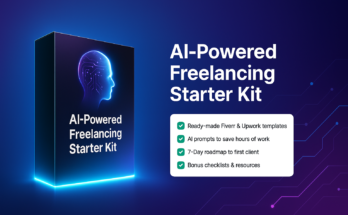As the field of artificial intelligence continues to expand, natural language processing (NLP) has become an essential component of many applications. Chat GPT 4 is a recent development in the field of NLP that has garnered Chat GPT 4’s Natural Language Processing a lot of attention. In this article, we will discuss what natural language processing is, how it is used in Chat GPT 4, and its potential impact on the future of AI.
What is Natural Language Processing?
Natural Language Processing is a branch of artificial intelligence that deals with the interaction between computers and human language. Its main goal is to enable computers to understand, interpret, and generate natural language just like humans do. NLP is used in a wide range of applications, such as language translation, chatbots, sentiment analysis, speech recognition, and text summarization.
How is NLP used in Chat GPT 4?
Chat GPT 4 is an advanced NLP model that was developed by OpenAI. It is the fourth generation of the GPT (Generative Pre-trained Transformer) series of language models. GPT-4 is trained on a massive amount of data using unsupervised learning, which means that the model is not explicitly taught how to perform specific tasks. Instead, it learns by analyzing patterns and relationships in the data.
GPT-4 has several improvements over its predecessor, GPT-3. It has a larger training dataset, which includes diverse sources of text, such as books, articles, and web pages. It also has more parameters, which means that it can generate more complex and coherent text. GPT-4 can perform a wide range of language tasks, such as language translation, text summarization, and question answering.
Potential Impact of Chat GPT 4 on the Future of AI
Chat GPT 4 has the potential to revolutionize the field of NLP and AI in general. It can generate human-like text with high accuracy, which can be used in a variety of applications, such as content creation, customer service, and education. It can also be used to improve language translation, speech recognition, and text summarization.
One of the potential applications of GPT-4 is in the field of chatbots. Chatbots are computer programs that can interact with users through text or voice. They are often used in customer service, where they can handle routine inquiries and provide basic information. GPT-4 can make chatbots more human-like by enabling them to understand and generate natural language.
Another potential application of GPT-4 is in content creation. GPT-4 can generate high-quality content on a wide range of topics, which can save time and resources for content creators. It can also be used to generate personalized content for individual users, based on their preferences and interests.
Conclusion
In conclusion, Chat GPT 4 is an advanced NLP model Chat GPT 4’s Natural Language Processing that has the potential to revolutionize the field of AI. It can generate human-like text with high accuracy, which can be used in a variety of applications, such as chatbots and content creation. As AI continues to advance, the potential applications of NLP models like GPT-4 will only continue to grow.
FAQs
- What is natural language processing?
Natural Language Processing (NLP) is a branch of artificial intelligence that deals with the interaction between computers and human language. Its main goal is to enable computers to understand, interpret, and generate natural language just like humans do. - What is Chat GPT 4?
Chat GPT 4 is an advanced NLP model that was developed by OpenAI. It is the fourth generation of the GPT (Generative Pre-trained Transformer) series of language models.- How is GPT-4 different from GPT-3?
GPT-4 is an improvement over GPT-3 in several ways. It has a larger training dataset, more parameters, and can perform a wider range of language tasks with higher accuracy. - What are some potential applications of GPT-4?
GPT-4 has the potential to be used in a wide range of applications, such as chatbots, content creation, language translation, speech recognition, and text summarization. - How does GPT-4 learn?
GPT-4 is trained using unsupervised learning, which means that it learns by analyzing patterns and relationships in a massive amount of data. It is not explicitly taught how to perform specific tasks, but rather learns by finding correlations in the data.
- How is GPT-4 different from GPT-3?



